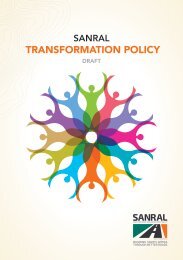Medical Focus - GPH - Vol 3 No 2 250521
Create successful ePaper yourself
Turn your PDF publications into a flip-book with our unique Google optimized e-Paper software.
The potential impact of COVID-19 pandemic on
tuberculosis 10,11
COVID-19 could impact TB control in several ways, including
increasing transmission of TB in the household, delaying the
diagnosis and treatment of TB, increasing poor treatment
outcomes and risks of developing drug-resistant TB.
Impact on Transmission
Lockdown was one of the measures used by countries to
prevent the spread of COVID-19. This measure may facilitate
household transmission of TB as over-crowding was prevalent
in developing countries during the lockdown.
A study conducted in Brazil showed that intensity of household
exposure increased the risk of TB infection and disease
among household members. Post lockdown periods still
present the same risk to under-5 year old children because
they depend on adults to walk away from such overcrowded
homes with heightened transmission.
Impact on treatment and diagnostic services
Overwhelming of health care systems by COVID-19 cases is
likely to impact on TB treatment and diagnostic services in
several ways:
• Diversion of resources (including human and financial)
away from routine services, to manage the pandemic
• Limited oversight and accountability of TB programmes
• Reduced number of health care personnel either due to
isolation or due to the illness
• Stigma and fear of COVID-19 infection at health care facilities,
discouraging people from visiting TB services
• Screening services for TB have experienced competition,
e.g. gene expert cartridges for TB being used for COVID-19;
sputum specimens being prioritised for COVID-19 testing
delaying diagnosis of TB
• Inappropriate use of BCG in response to the unproven theory
that BCG may protect against COVID-19
All of these seven factors will contribute to delays in the
diagnosis and commencement of treatment. Late diagnosis
and inappropriate treatment of TB can also increase the
risk of poor treatment outcomes and development of drugresistant
TB. Misdiagnosis and under-detection of TB are
ongoing problems for TB programmes. It was estimated that
3 million TB cases were undetected in 2018. This number
is likely to increase due to our current diversion of health
facility toward the containment of COVID-19 pandemic.
Impact on prevention and control of tuberculosis
Prevention and control strategies for TB have already been
compromised due to the COVID-19 pandemic. Many fora for
exchanging TB research and information, such as seminars,
workshops and annual conferences, have not been conducted
in 2020. For instance, the World Tuberculosis Day, which is
celebrated on March 24 each year, to build public awareness
about the prevention and control of TB and to raise funding
to support TB control efforts, has been cancelled in several
countries.
Vaccination programmes, including the BCG vaccination that
has been given to prevent childhood TB, have been negatively
affected by COVID-19.
Furthermore, TB preventive therapy, which is often given to
high-risk groups to prevent the progression of latent TB to active
TB has also been affected by COVID-19. The worldwide
pandemic of COVID-19 may affect the global strategy of ending
TB by 2035 in several ways.
Many of the factors affecting diagnostic and testing services
also affect prevention and control programmes. Shortages of
resources, either directly due to diversion towards pandemic
management or indirectly due to broader economic consequences
of the pandemic and stretched national budgets, are
likely to impact on routine public health programmes.
The COVID pandemic has left a devastating effect on the poor,
through job losses, rising prices, and disruptions to services
such as education and health care. As a result of this, more
people have fallen into extreme poverty. This will have a longterm
impact on the burden of TB because poverty is widely
recognised as an important risk factor for being infected and
developing active TB.
Strategies to mitigate the effect 8,9,13
• Apply infection prevention and control measures (e.g.
cough etiquette, personal protective equipment)
• Separate or isolate people with presumed or demonstrated
infectious TB
• Provide TB preventive treatment for high-risk groups and
initiate TB treatment early
• Maintain supports to essential TB services during and after
the COVID-19 pandemic
• Provide information to patients about COVID-19 and TB so
they can protect themselves and continue their TB treatment
• Decentralise TB treatment to community health workers
and increase access to TB treatment for home-based TB
care
• Provide adequate supply of TB medication to patients for
safe storage at home
• Design mechanisms to deliver medicines and to collect
specimens for follow-up testing at home
• Integrate TB and COVID-19 services for infection control,
contact tracing, community-based care, surveillance and
monitoring
• Train health professionals and recruit additional staff to
work on TB programmes
• Use virtual care and digital health technologies (e.g., video
observed therapy) for adherence support, early initiation
of treatment, remote monitoring of TB patients, counselling,
and follow-up consultations
• Design strategies to deliver BCG and TB preventive therapy
at home
• Create community awareness of the importance of TB services
• Conduct research to identify the impact of COVID-19 on
reactivation of TB and to design interventions mitigating
this problem
5 Vol 3 No 2 - 2021











